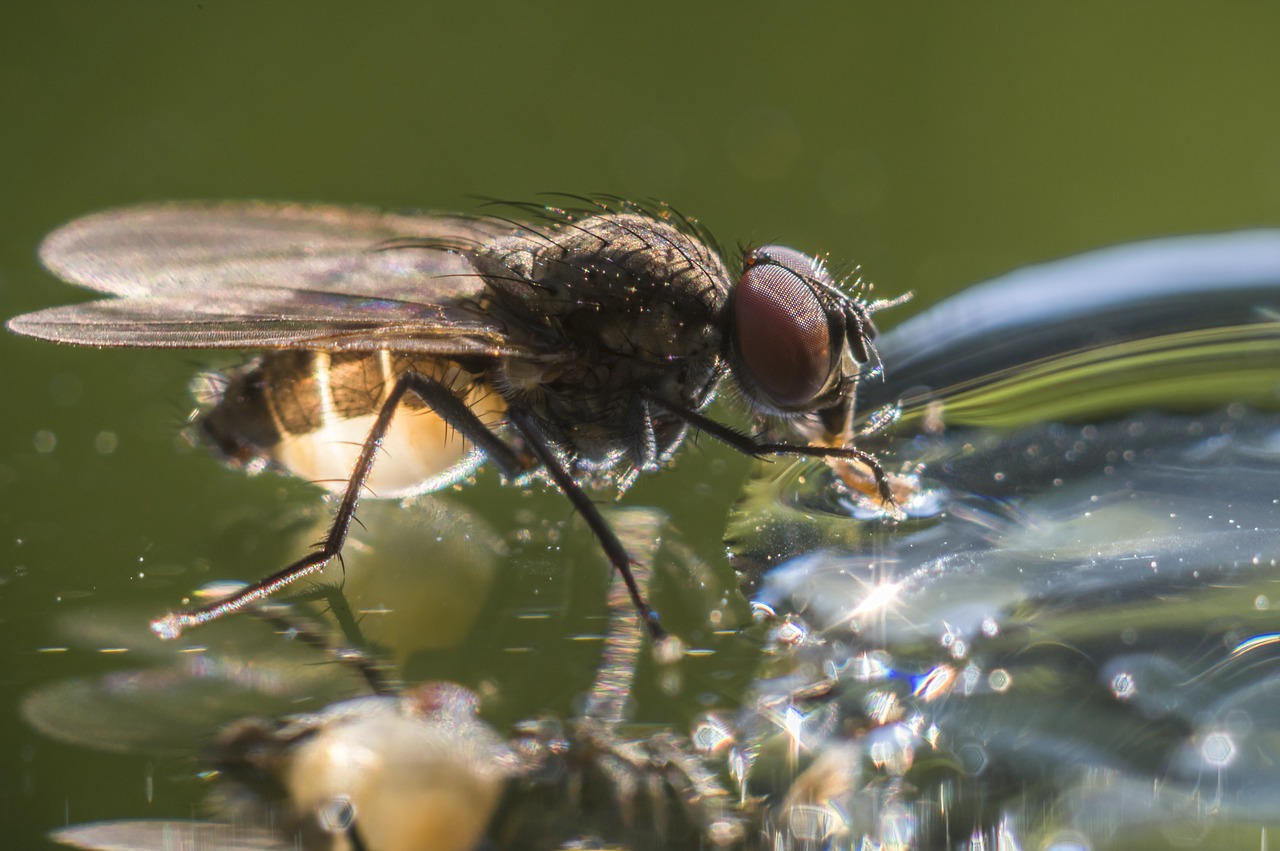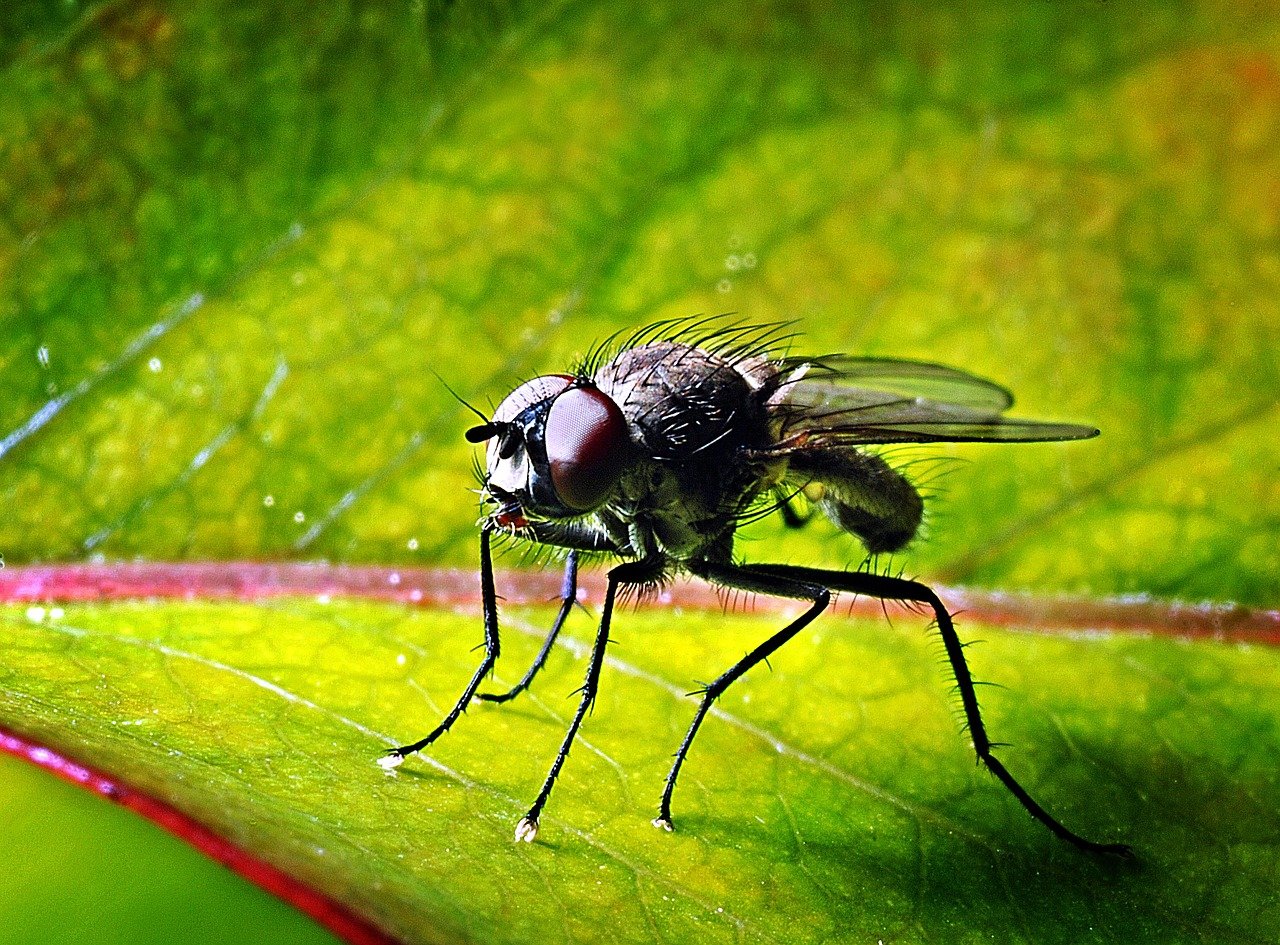Insects as annoying as flies occupy an important place in nature. They serve as food for many birds, spiders and other living creatures, and since they breed extremely quickly, their population is not declining. But some of them can be dangerous, such as the famous tsetse fly that is rampant in Africa. Fortunately, modern science has learned at least partly to deal with such a scourge.
Interesting facts about flies:
In ancient Egypt, a golden fly the size of a palm was an honorary military award for bravery. She was awarded especially distinguished warriors.
Many have seen flies rub their paws against each other. They do this in order to clean the paw pads from dust and dirt, since their taste buds are located there. Flies feel the taste precisely with the help of touches with their paws.

Some of their species live only in the wild, while others have long adapted to coexistence with man, and without people they can no longer survive.
The most dangerous tsetse flies do not bite zebras, because in their vision the striped skin of these ungulates looks like a random flickering of black and white stripes. Zebras themselves are not tameable, but locals have long used part-striped hybrids between zebras and horses in agriculture with might and main, as they are much less likely to suffer from tsetse fly bites than ordinary horses.
They are able to smell at a distance of up to 500 meters. The olfactory organs are the antennae growing on the head.

Ordinary houseflies live on average about 30 days. During this time, under favorable conditions, they manage to lay up to 3,000 eggs.
Different types of flies feed on completely different foods, from vegetable juices to blood and excrement.
Horseflies also belong to flies. They got their name because during feeding they lose interest in everything around them, and they are easy to swat.

Pusher flies attack other small insects right in flight, plant them on their spiked paws and suck out their insides.
The aforementioned tsetse fly is not poisonous in itself, but it carries the most dangerous sleeping sickness. Because of it, several tens of thousands of people and a huge number of livestock die in Africa every year.

Some types of flies are useful. For example, the tahina fly lays its eggs in the bodies of the larvae of other insect pests.
Fly eyes are made up of several thousand facet segments.
In Ethiopia, scientists have found a way to reduce the population of the most dangerous tsetse flies. They bring flies to special factories, males are sterilized, and females are destroyed. The males are then released into the wild. The fact is that after fertilization, albeit false, the female does not allow other males to approach her.

In the United States, California, there are flies whose larvae hatch in lakes of crude oil.
There are no hairless flies. All of their species are covered with hairs, but thin, so they are not visually striking.
The larvae of some species of these insects are able to parasitize in the bodies of a wide variety of living creatures, from earthworms to humans.

The cabbage fly is a real disaster for gardeners and farmers. By itself, it practically does not harm, but its larvae completely eat all the cabbage.
In addition to colors, flies also distinguish ultraviolet light.
The stomach of flies is not adapted to the digestion of solid food, therefore, before eating, they moisten it with saliva.





Related Posts
7 Interesting Facts About Running
7 Health Benefits of Laughing
5 Brilliant Facts About Rhinoceros Beetles